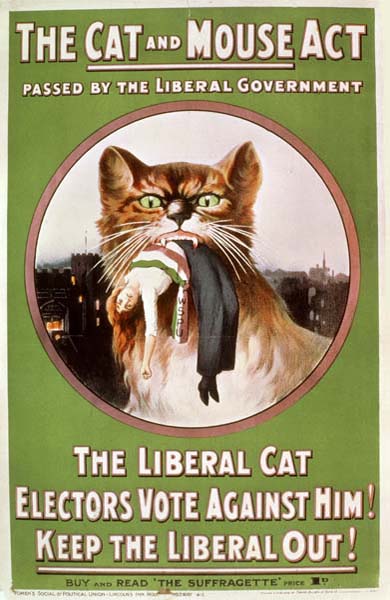Cat and Mouse Act
The Cat and Mouse Act is the better known name for the Prisoners, Temporary Discharge for Health Act, which was passed in 1913. The Act was designed to tackle the increasing number of hunger strikes among Suffragettes by releasing prisoners who were at risk of death. When they had recovered they would were brought back to prison where the process would continue again.
The Liberal government of Asquith was concerned and embarrassed by the Suffragettes’ hunger strikes. Many militant Suffragettes were educated and from middle class backgrounds and the public was shocked by the government’s treatment of them.

When Suffragettes were arrested for protesting, many would continue their protest in prison by going on hunger strike. This was aimed to bringing attention to their cause and embarrassing the government. In response, the government force-fed those on strike. Force feeding was traditionally only used in mental institutes, making it highly controversial. This act greatly embarrassed the government and it was keen to avoid the death of any Suffragette in prison.
The government introduced the ‘Cat and Mouse Act’ to avoid the possibility of Suffragettes dying in prison. It meant that when a Suffragette went on hunger strike in prison the authorities would allow her to get so weak that, if released, she could do no harm. If the woman regained her strength and committed another offence while on license she would be immediately arrested and re-imprisoned.
The Act proved to be ineffective. The authorities experienced difficulty in re-arresting the released hunger-strikers, who often eluded arrest with the help of a network of suffragette sympathisers. It also failed to demoralise the activists as it undermined the moral authority of the government.
See also: World War One and Women
MLA Citation/Reference
"Cat and Mouse Act". HistoryLearning.com. 2024. Web.
